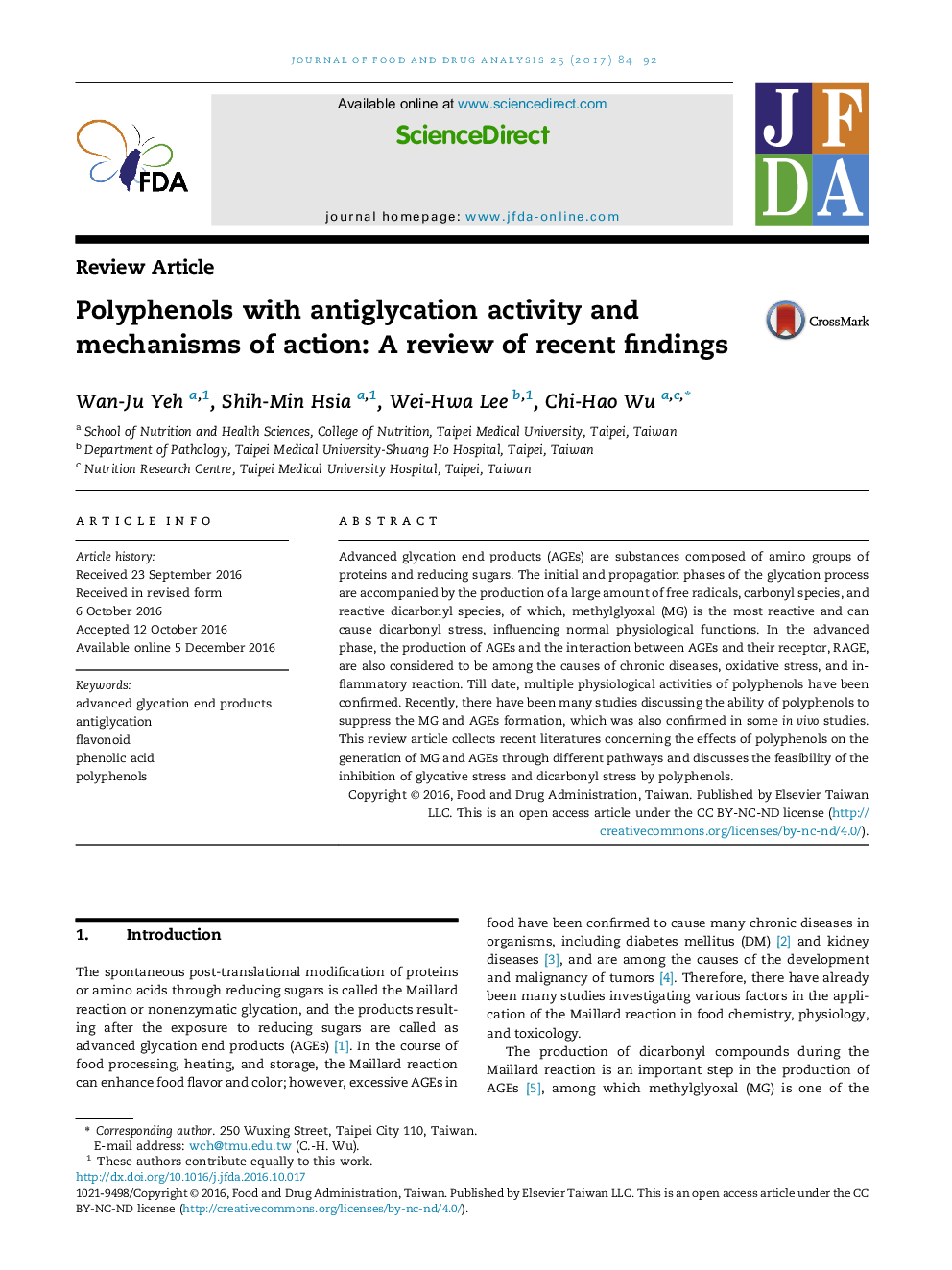| Article ID | Journal | Published Year | Pages | File Type |
|---|---|---|---|---|
| 5551073 | Journal of Food and Drug Analysis | 2017 | 9 Pages |
â¢The Maillard reaction (nonenzymatic browning or glycation) has been implicated in accelerated aging and diabetic complications in vivo.â¢It remains unclear whether polyphenols exert protective effects against glycotoxin-induced damage.â¢This article provides an outline of antiglycation properties of polyphenols and discusses their possible mechanisms of action.
Advanced glycation end products (AGEs) are substances composed of amino groups of proteins and reducing sugars. The initial and propagation phases of the glycation process are accompanied by the production of a large amount of free radicals, carbonyl species, and reactive dicarbonyl species, of which, methylglyoxal (MG) is the most reactive and can cause dicarbonyl stress, influencing normal physiological functions. In the advanced phase, the production of AGEs and the interaction between AGEs and their receptor, RAGE, are also considered to be among the causes of chronic diseases, oxidative stress, and inflammatory reaction. Till date, multiple physiological activities of polyphenols have been confirmed. Recently, there have been many studies discussing the ability of polyphenols to suppress the MG and AGEs formation, which was also confirmed in some in vivo studies. This review article collects recent literatures concerning the effects of polyphenols on the generation of MG and AGEs through different pathways and discusses the feasibility of the inhibition of glycative stress and dicarbonyl stress by polyphenols.
Graphical abstractDownload high-res image (133KB)Download full-size image
